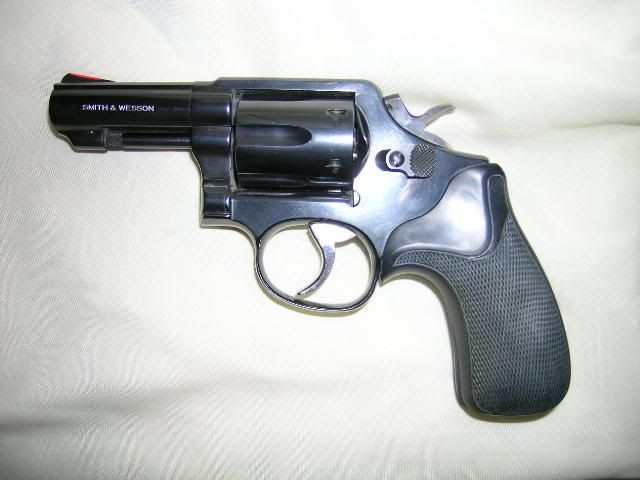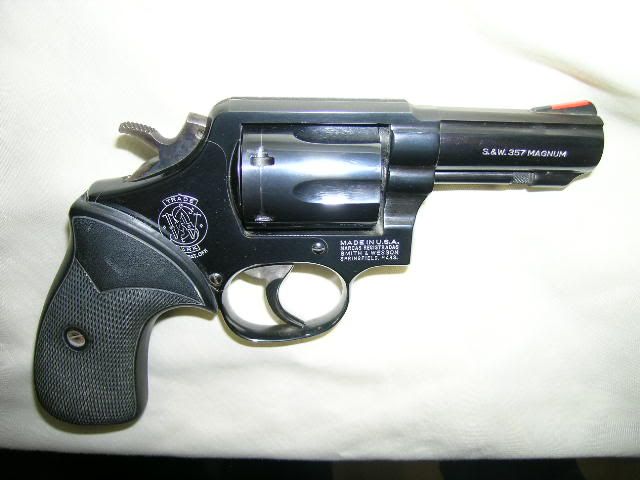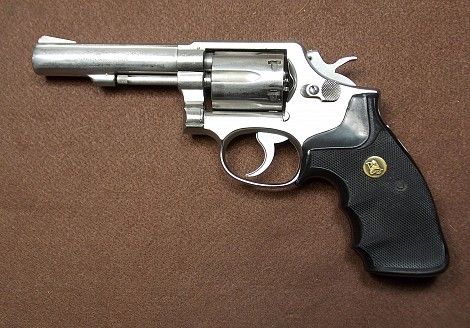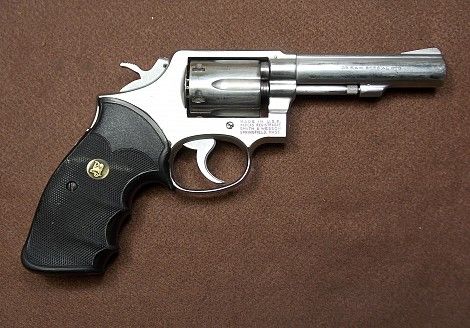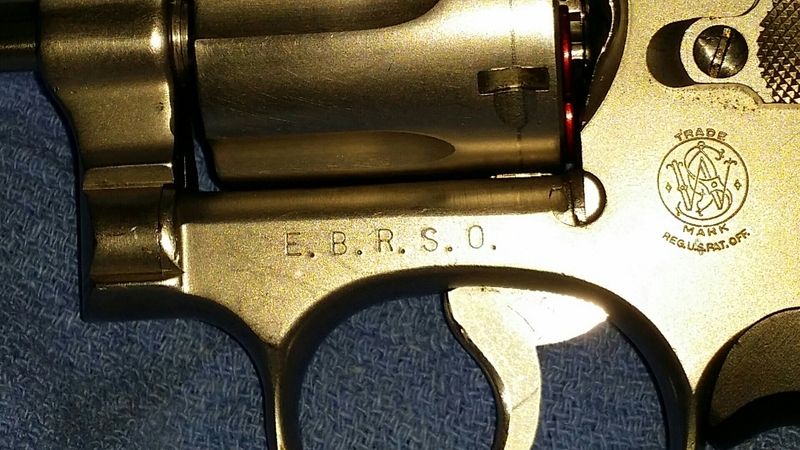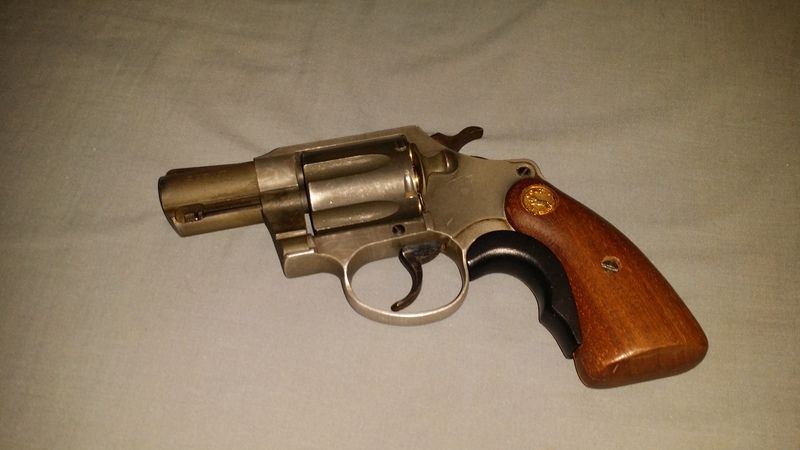Post by Deleted on Apr 8, 2017 15:39:22 GMT -5
What’s wrong with a .38 Special?
By Mike Venturino, AmericanHandgunner.com
Let me stress heavily I’m no self-defense expert, I’m no guru on home defense handguns and my total law enforcement career consists of being deputized in 1982 for all of 8 hours. Never, not once, have I had to resort to any firearm in a crisis situation. That said, to some family friends and even distant relatives I’m the only “gun-guy” they know. So it’s not easy to fend them off when in this current political climate I’m asked what sort of guns they should buy for home defense. That puts me on the hot seat because I don’t think novices to firearms should buy any gun unless they include some sort of training as part of the picture — and I stress that to them.
Even so I know some of the males think, “Yeah, yeah, just give me some info, I’ll figure out the rest for myself.” The Daniel Boone Syndrome is not dead. And, I know they will never go to the effort to get training or perhaps not even visit a range to gain experience further than taking their new gun to see if it actually goes off.
My stock answer to someone wanting to buy their first home-defense handgun is, “What’s wrong with a .38 Special?” Some people, mostly those with just a grain of knowledge, have acted downright offended and say. “Why, that’s not state of the art!” Here’s where it gets hard because they have to be told, “You’re not state of the art either.”
In my honest opinion, double-action .38 Special revolvers may not be “state-of-the-art” but they are stable in the art. To me, it’s a no brainer. Double-action .38 Special revolvers are easy handguns to train with. Opening one for loading consists of no more than pressing a latch or button and swinging the cylinder out. There’s no trick to getting chambers charged since cartridges can only fit in one direction. I’ve actually seen novices try to load semi-auto magazines with the rounds backwards. Then the cylinder is pushed closed till it clicks in place. That’s all there is to it.
A double-action revolver requires merely pressing the trigger to fire. There’s no safety to remember, and no moving slide to bite fingers. Most double actions can also be fired single action, which is an aid when gaining familiarization with the handgun, or weak hands, even if not optimum for a potentially deadly situation.
Then there’s the ammo factor. Some semi-autos can be amazingly finicky about ammo. I own one .40 S&W that will not feed certain types of factory ammo, yet runs 100 percent with others. That fact may not have even revealed itself to me if not for having access to many different types of factory ammo due to my occupation.
Conversely, a .38 Special double-action revolver always works if it’s in good repair. They’re about as foolproof as a handgun can get. Good quality factory ammo ranges from very light full wadcutter loads meant for target shooting, to +P types meant for personal defense. The .38 Special might have a bad rap among those who see nothing less than big bores as effective, but effective only counts if hits are made. Almost anyone can learn to handle a .38 Special with proficiency. That’s not true of big-bore handgun calibers.
The Handguns
What about the exact .38 Special handgun? I almost always say, “Get a Smith & Wesson Model 10 with 4″ barrel.” Those are built on Smith & Wesson’s medium (K) frame and are heavy enough so recoil is mild. A 4″ barrel doesn’t deliver intimidating muzzle blast like a snubnose. The lighter .38 Special double actions, such as Smith & Wesson’s variations of Chief’s Special on their light (J) frame, are better suited to experienced shooters. This is even truer of the new breed of extra-light polymer double actions being put out now by Smith & Wesson, Ruger and Taurus.
Inquisitors have sometimes thought they would trip me up by asking, “You recommend a .38 Special for us but what do you have for yourself?” It’s true a Kimber .40 S&W resides in my sock drawer, but even closer is a 12-gauge shotgun. That said, a S&W Model 442 goes with me nearly everywhere when traveling in-state, and I have at least two other .38 Specials (one a Model 10) placed strategically in our home. There’s nothing wrong with a good .38 Special revolver.
By Mike Venturino, AmericanHandgunner.com
Let me stress heavily I’m no self-defense expert, I’m no guru on home defense handguns and my total law enforcement career consists of being deputized in 1982 for all of 8 hours. Never, not once, have I had to resort to any firearm in a crisis situation. That said, to some family friends and even distant relatives I’m the only “gun-guy” they know. So it’s not easy to fend them off when in this current political climate I’m asked what sort of guns they should buy for home defense. That puts me on the hot seat because I don’t think novices to firearms should buy any gun unless they include some sort of training as part of the picture — and I stress that to them.
Even so I know some of the males think, “Yeah, yeah, just give me some info, I’ll figure out the rest for myself.” The Daniel Boone Syndrome is not dead. And, I know they will never go to the effort to get training or perhaps not even visit a range to gain experience further than taking their new gun to see if it actually goes off.
My stock answer to someone wanting to buy their first home-defense handgun is, “What’s wrong with a .38 Special?” Some people, mostly those with just a grain of knowledge, have acted downright offended and say. “Why, that’s not state of the art!” Here’s where it gets hard because they have to be told, “You’re not state of the art either.”
In my honest opinion, double-action .38 Special revolvers may not be “state-of-the-art” but they are stable in the art. To me, it’s a no brainer. Double-action .38 Special revolvers are easy handguns to train with. Opening one for loading consists of no more than pressing a latch or button and swinging the cylinder out. There’s no trick to getting chambers charged since cartridges can only fit in one direction. I’ve actually seen novices try to load semi-auto magazines with the rounds backwards. Then the cylinder is pushed closed till it clicks in place. That’s all there is to it.
A double-action revolver requires merely pressing the trigger to fire. There’s no safety to remember, and no moving slide to bite fingers. Most double actions can also be fired single action, which is an aid when gaining familiarization with the handgun, or weak hands, even if not optimum for a potentially deadly situation.
Then there’s the ammo factor. Some semi-autos can be amazingly finicky about ammo. I own one .40 S&W that will not feed certain types of factory ammo, yet runs 100 percent with others. That fact may not have even revealed itself to me if not for having access to many different types of factory ammo due to my occupation.
Conversely, a .38 Special double-action revolver always works if it’s in good repair. They’re about as foolproof as a handgun can get. Good quality factory ammo ranges from very light full wadcutter loads meant for target shooting, to +P types meant for personal defense. The .38 Special might have a bad rap among those who see nothing less than big bores as effective, but effective only counts if hits are made. Almost anyone can learn to handle a .38 Special with proficiency. That’s not true of big-bore handgun calibers.
The Handguns
What about the exact .38 Special handgun? I almost always say, “Get a Smith & Wesson Model 10 with 4″ barrel.” Those are built on Smith & Wesson’s medium (K) frame and are heavy enough so recoil is mild. A 4″ barrel doesn’t deliver intimidating muzzle blast like a snubnose. The lighter .38 Special double actions, such as Smith & Wesson’s variations of Chief’s Special on their light (J) frame, are better suited to experienced shooters. This is even truer of the new breed of extra-light polymer double actions being put out now by Smith & Wesson, Ruger and Taurus.
Inquisitors have sometimes thought they would trip me up by asking, “You recommend a .38 Special for us but what do you have for yourself?” It’s true a Kimber .40 S&W resides in my sock drawer, but even closer is a 12-gauge shotgun. That said, a S&W Model 442 goes with me nearly everywhere when traveling in-state, and I have at least two other .38 Specials (one a Model 10) placed strategically in our home. There’s nothing wrong with a good .38 Special revolver.



